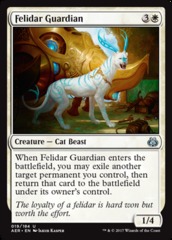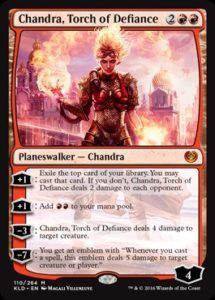Banning Marvel: Right and Wrong?

Magic players love calling for bans. Magic players love complaining about bans. Every ban cycle sees the same discussions again and again, the dead horse beaten, embalmed, and eternalized. Any decision – or indecision – meets the same howls of outrage: I’m quitting Magic until X is banned! I’m quitting Magic because X wasn’t banned! It’s obvious what should have happened (“well, actually…”)!
In the case of Aetherworks Marvel, it really was obvious. Even those who thought the ban was unnecessary weren’t sad to see it go. Marvel players – both the Spikes who grudgingly jumped on board because the deck was broken, and those of us who played it before it was good – knew it was only a matter of time. Nobody who lost repeatedly to Turn 4 Ulamog was shedding any tears for Marvel. Still, even when the decision is obvious, it’s worth asking why, so that harder decisions are better informed. As we’ll see, the right decision can be made for the wrong reasons…

Aaron Forsythe’s article explaining the ban challenged the basic premise of many complaints: Marvel, he argued, “is not a fundamentally broken deck in the traditional sense – its win percentages against other decks in the metagame doesn’t paint the picture of true dominance (despite some prevailing opinions)”. The implication can be taken as rather patronizing – ‘you’re wrong, but we’ll give you what you want’ – and the assumptions are worth examining. For one, equating “broken” with having the highest win percentage is a little misleading – the term is often used for cards or decks that go beyond the usual constraints of their format in some way. Many ‘best decks’ like Modern Jund boasted oppressively good win rates without doing anything abnormal: they played normal Magic much better than anyone else. Other ban victims – Summer Bloom, Blazing Shoal, Treasure Cruise – dominated so thoroughly on some axis of the game that they made a mockery of the official vision for the format; Turn 4 Ulamog in Standard definitely belongs in here! Decks that exploit these cards effectively are likely to have very high win rates but it’s not guaranteed, especially if strong, targeted hate exists in the format.
Definitions aside, Forsythe’s statistical claim is more important and less coherent. The idea that most decks had a good Marvel matchup is based on a snapshot of a metagame already heavily warped by Marvel’s dominance. Any promising deck that is weak to Marvel is already dead on arrival and can never become one of the ‘top decks’ featured in articles like this. The midrange Delirium deck is the perfect example – it was crushed at Pro Tour Kaladesh when Marvel was everywhere, became a top tier deck after UW Flash pushed Marvel out, then vanished again with Marvel’s resurgence. In Marvel’s wake many decks consigned to the fringe have asserted themselves as serious contenders – Oketra’s Monument, Temur Energy, and Metalwork Colossus to name just three. The list of top decks is already selecting for those that can compete with Marvel.

On top of that, players tuned their builds of these decks with Marvel as the primary target – look at Shaun McLaren’s BG deck from Montreal with 4 Maindeck Dissenter’s Deliverance or Vehicles swapping colours for Spell Queller. A healthy metagame sees decks’ popularity waxing and waning in cycles: a deck establishes itself as the best deck, its competitors adjust to fight it, their predators rise up to exploit them. Marvel was so good that it remained at the top of the food chain for the format’s lifespan. Even when Standard was as hostile as possible towards Marvel, the deck was still putting up incredible results in high-level play. Besides, even if you agree with Forsythe that Marvel wasn’t as good as advertised, it’s not a deck you would want in the format if you could design it from the ground up.
Forsythe argues that, for the same reason Marvel was doing well at Grand Prix and the Pro Tour, it isn’t as oppressive in the hands of your typical FNM opponent. This is true to the extent that any deck performs worse with a less skilled pilot but it misses an important point: Marvel crushes the less tuned or off-the- wall decks that people love to play at FNM. On top of Marvel’s inherent randomness ruining their enjoyment, it is hard for those players to know how to attack Marvel. The card is a classic example of why ‘spell-based’ combo’ is so dangerous – unless you can fight over it in their hand or on their stack, which is not easy in Standard, they will get at least one spin and can overwhelm whatever your board is if they hit. Colour combinations like WG or RG can only cross their fingers and hope to fade the ceaseless hunger. Even cards like Dispossess that seem tailor-made for fighting Marvel are much weaker than they appear as you can grind them out with Rogue Refiner or Glimmer of Genius and cast Ulamog with alarming consistency. It’s easy for a new player to turn up at FNM excited and leave feeling frustrated and helpless. Marvel’s existence puts Wizards in a tough position too. Because of their reversion to the old rotation schedule, Marvel would be legal for another six months; we’d have to wait until autumn 2018 for it to finally get off the stage. Any splashy finisher or expensive build-around- me card released until then is immediately viewed through one lens: how good is this if played on turn 4 via Marvel? Even relatively weak or gimmicky cards at those high mana costs are much too good if deployed that early. The Nicol Bolas, God-Pharaoh spoiler should have been the highlight of Amonkhet block – an exciting card that embodies the block’s entire story. Instead, there was only one question: does this have a place in Marvel? The alternative to banning Marvel was banning nothing but spending a year walking on eggshells whenever you print a powerful card.


This isn’t the end of the story. When you ask if a card should be banned, you’re really asking two questions. Would the format be better (by your preferred metric) without this card? If so, does that actually warrant a ban? For most of modern Magic, Wizards was understandably reluctant to push that lever even when Standard was stagnating. Since the Affinity bans in 2005 only Stoneforge Mystic and Jace, the Mind Sculptor – defining cards in an historically overpowered deck – have been axed, and it took another five years for it to happen again. Since then there have been three rounds of bans in the last eight months. What changed?
At first glance this marks an embrace of the ban list as a tool for actively managing a format rather than an emergency brake. The Saheeli Rai + Felidar Guardian combo and Marvel were both egregious design mistakes that were always on borrowed time and Emrakul pushed the envelope too far (though you can argue that Marvel was the real problem and that pre-Aether Revolt as well as post-Amonkhet Standard would look a lot better if Marvel had gone early). Smuggler’s Copter and especially Reflector Mage don’t meet the same criteria. If they had known they would later ban Felidar Guardian and Marvel, adding bans that aren’t strictly necessary would look more risky. Bans deal a crushing blow to consumer confidence and are most damaging for players whose commitment to the game is most tenuous – a student on a budget who assembled a deck over time or someone who dabbles in competitive play when they like a deck can be driven away from a format – or Magic entirely – if that deck is banned. Forsythe’s suggestion that former Marvel players just swap in a playset of Chandra, Torch of Defiance – likely a chase mythic in Standard going forward) to keep “virtually the same deck” looks a little glib (and what a combo-control deck like Marvel has in common with a creature-heavy midrange deck is unclear).

Most players understand that drastic measures can be required and they may suffer from them as long as the situation is truly exceptional. When back-to- back-to- back sets all demand bans, the obvious conclusions are that the bar has been lowered or that the design process is so flawed that these crises are now common; either way, players feel much less safe investing in a format. Perhaps the key is consistency: more frequent bans are fine as long as the criteria are clear so that players can make informed decisions. On the other hand, the optics of a ban are so bad – a tacit admission that the developers have screwed up – that this trigger-happy approach is risky.
Ultimately, this damage to consumer confidence has to be weighed against the damage of leaving a format in that state. It’s unfortunate if someone stops showing up to FNM because their deck was banned or they don’t want to risk buying cards. but it matters more if that FNM doesn’t fire because players are sick of Marvel (or Saheeli, or…). Magic players often threaten to act in a certain way – if you listen to the Reddit chorus, Magic already died several times when Siege Rhino or Thragtusk or some other card was printed – but sales and attendance figures tell the only important story. I remember looking over vast stretches of empty tables at GP Amsterdam while listening to vendors discuss how slow business had been that weekend; a smarter man would have sold his Ulamogs then.
Even when specific ban decisions seem easy, the philosophy behind the ban list is a fascinating topic. I’ve only scratched the surface here but I hope this gives you food for thought the next time this matters. If you have thoughts on the matter please share them in the comments below.





